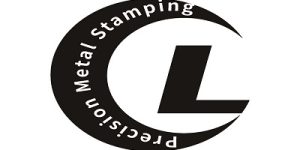When it comes to stamping parts, choosing the right diet can make all the difference. Progressive, transfer, and compound dies are three common types of dies used in stamping, each with its own advantages and disadvantages.
In this post, we’ll explore the differences between these types of dies and help you determine which one is best for your stamping needs
Progressive Die Stamping
Progressive die stamping is commonly used for high-volume production of tight tolerances stamped parts. They consist of a series of stations, each of which performs a specific operation on the part. The part is automatically moved from station to station, with each station adding a new feature.
This method is particularly useful for producing parts that require multiple operations, such as bending, punching, and forming. Progressive die stamping allows for these operations to be completed in a single pass, reducing production time and costs.
Advantages of progressive die stamping
- Reduces waste
- Reduces the time and cost associated with producing each part;
- Cost-effective for high-volume production: reduced labor costs and increased production rates can result in significant cost savings over other production methods.
- Suitable for long-run productions
- Better for small parts with tight tolerances
Disadvantages
Progressive die stamping requires the design and manufacture of complex steel tooling, which can be expensive; also, it is not suitable for making deep drawings parts.

Compound Die Stamping
Compound die stamping is a process that involves using a single die to perform multiple cutting and forming operations simultaneously. It means the various bends, punches, or cuts operate in a single stroke.
This process is ideal for producing simple parts with consistent features, as it eliminates the need for multiple dies and reduces the amount of scrap material generated during production,such as washers or wheels
Advantages
- Lower tooling cost compared with progressive tooling
- Lower costs and higher yields: Using a single die for multiple operations reduces the need for additional tooling and minimizes the amount of scrap material generated during production

Transfer Die Stamping
In transfer die stamping, the part is separated from the metal strip in the first operation, and then it is transferred from station to station to complete the stamping process.This is different from progressive die stamping, where the part remains attached to the metal strip and moves through the die as a continuous strip until all stamping operations are completed.
The transfer die typically consists of a series of individual dies, each of which performs a specific stamping operation. The part is loaded onto the first die, where the first stamping operation is performed. The mechanical arm or conveyor system then moves the part to the second die, where the second stamping operation is performed, and so on. The part continues to move from station to station until all of the required stamping operations have been completed.
Transfer die stamping is particularly well-suited for producing deep-drawn parts, as well as tubular parts.
Advantages
- Ability to produce more complex and larger parts
- Lower tooling cost

Comparison of Progressive, Transfer, and Compound Dies
To give you a better idea for these three dies, we would like to make the chart below, from which you will have better ideas. This will guide you in choosing the suitable method for your stamped parts.
| Die Type | Advantages | Disadvantages | Best Use Cases |
| Progressive Die | High speed production, efficient use of material, complex shapes, high precision | Limited to flat parts, high initial cost, longer lead times for complex designs | High-volume production of flat, complex parts with high precision |
| Transfer Die | High speed production, better material utilization, minimal waste, low production cost per part, good for deep-drawn parts | High initial cost, longer lead times for complex designs, limited to flat parts | High-volume production of flat, deep-drawn parts with minimal waste |
| Compound Die | High precision, less material waste, lower initial cost, good for small to medium-sized parts | Limited to simple shapes, less efficient material utilization | Low- to medium-volume production of simple, flat parts with high precision and minimal waste |
Metal Stamping From Chengli Hardware
Metal stamping is a highly efficient manufacturing method that utilizes a die and press system to create various parts from a strip of metal material. Choosing the correct die for your stamping needs is essential to achieving your desired outcome.
Progressive, transfer, and compound dies each have their unique advantages and disadvantages, and understanding these factors can help you determine which one to use. When deciding which die to choose, consider factors such as the complexity of your part, production volume, and cost.
Using a decision-making framework or checklist, you can weigh these factors and make an informed decision that meets your needs. Whether you choose progressive, transfer, or compound dies, working with a reliable and experienced manufacturer can help ensure high-quality and efficient production of your stamped parts. Try Chengli Hardware,well equipped with 50 set stamping machines; our engineers will help you choose the right method to do your project.
